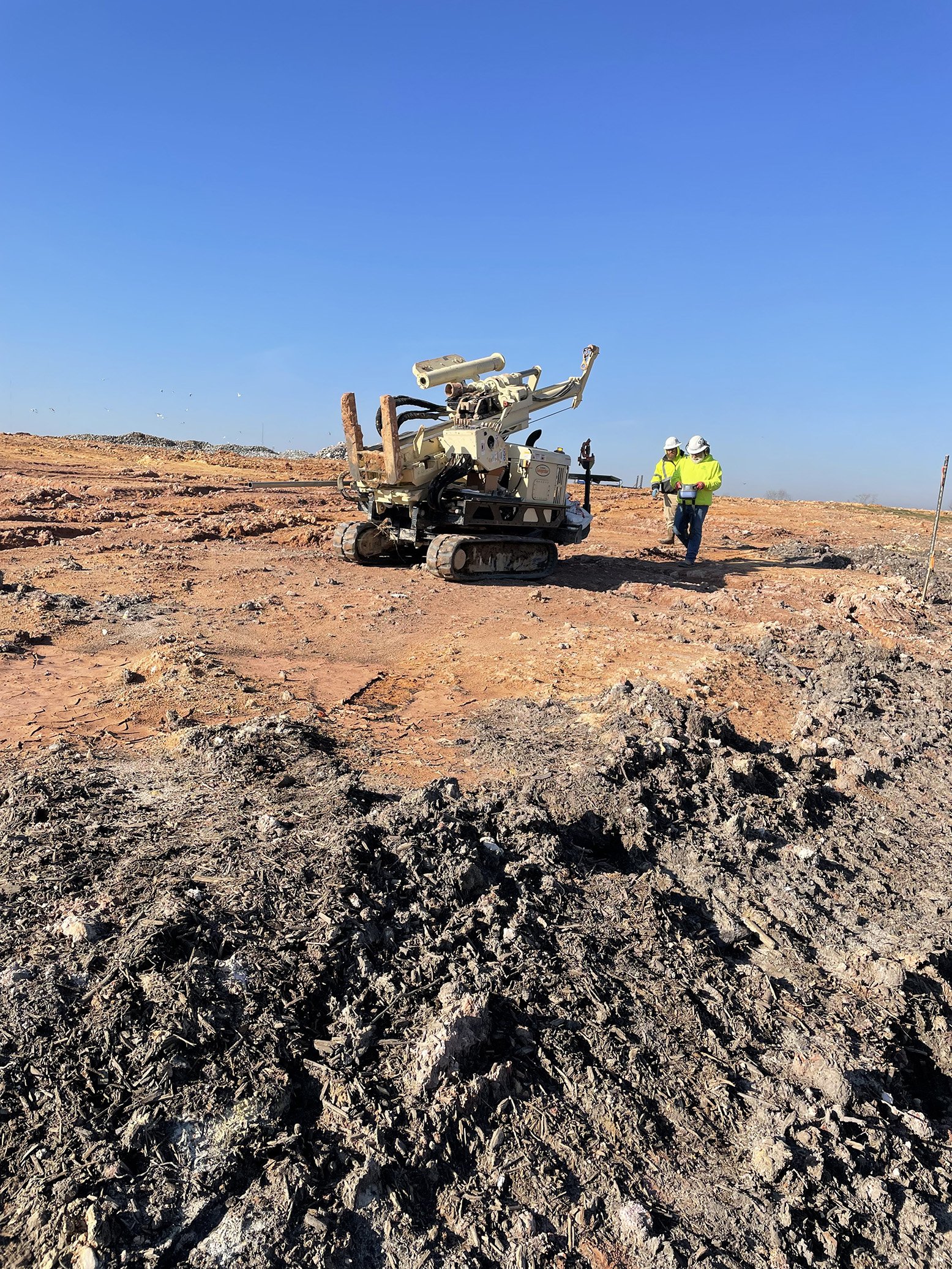
The Real Hidden Cost of Landfills:
How Small Inefficiencies Become Big Financial Sinkholes
By Richie Deason / Chad Hall
Not all landfill costs are visible on a spreadsheet.
Some hide in plain sight—beneath worn equipment, behind rising fuel bills, or buried in inefficient compaction ratios. These are the quiet budget-busters: slow, subtle, and easy to miss until they become too big to ignore. We call them hidden costs—and they’re one of the biggest threats to a landfill’s long-term financial health.
For municipal operators, these costs can be especially dangerous. Unlike private corporations that spread risk across dozens of sites, most cities and counties only get one shot at running a landfill right. A single oversight can create financial liabilities that last decades.
The Machinery That Eats Your Budget in the Dark
When people think of equipment costs, they usually think of the purchase price or routine maintenance. But the real cost of aging equipment is how it bleeds your operation over time—slowly, silently.
Old machinery doesn’t just run slower—it siphons resources invisibly:
Fuel efficiency plummets as engines wear out
Repairs become routine instead of rare
Cycle times stretch, increasing labor hours and operator fatigue
Inefficient compaction eats up valuable airspace
Increased emissions may trigger new regulatory burdens
One broken hose won’t blow your budget. But when every machine is just a little less efficient, the ripple effect across a landfill is staggering.
Just replacing worn components can cost over $3,000 per year—before you even factor in downtime, rentals, or lost progress.
Caterpillar data shows equipment breakdowns can result in 400–800 hours of nonproductive time per machine per year.
Now multiply that across your entire fleet.
Now stretch that across a 30-year landfill lifecycle.
That’s the hidden cost.
Every 100 lbs/yd³ improvement in compaction can save up to $75,000/year.
(Source: Waste Advantage Magazine)
The Myth of “Saving Money” by Delaying Replacements
Replacing a compactor or dozer is expensive—no question. But holding onto old equipment is like refinancing your future with bad interest rates. It doesn’t save money. It just moves the bill—and adds interest.
Consider:
Lost airspace from poor compaction means your site fills up sooner.
Fuel costs spike as aging machines gulp more diesel.
Operator morale dips when machines break down mid-shift.
Risk of injury increases with outdated controls and inconsistent performance.
With airspace valued at $64 per cubic yard, your landfill’s most valuable commodity is being wasted… one inefficient pass at a time.
The Hidden Financial Dominoes
Hidden costs don’t show up one at a time. They pile on each other like layers in a trash cell.
Cell Construction & Capacity Creep
Poor compaction = faster airspace consumption = earlier cell construction = more capital spending.
The cost of lost time isn’t just in dirt and liner—it’s in:
New permitting fees
Expanded gas/leachate systems
Accelerated engineering and design costs
Regulatory Drift
Regulations don’t stay still. What’s compliant now may become a liability next year.
Hidden risks include:
New PFAS leachate treatment requirements
Tightening gas emission thresholds
Longer post-closure monitoring periods
Enhanced stormwater control mandates
If your equipment is barely compliant today, you’re already behind
Post-Closure: The 30-Year Bill No One Sees Coming
Today’s inefficiencies create tomorrow’s liabilities.
If your landfill fills up early, you might be forced to close—or scramble for expansion approvals. Worse? You could be paying for post-closure care far earlier than budgeted.
Case in point: Chiquita Canyon Landfill (California, 2025)
Shut down waste operations due to compounding environmental issues and lawsuits.
Post-closure costs are arriving years early—and millions over what was planned.
Checklist: Are Hidden Costs Creeping into Your Landfill?
If you’re seeing these signs, you may already be paying for more than you realize:
Equipment breakdowns more than once a quarter
Rising fuel costs with no increase in hauling volume
Longer cycle times for daily cover or compaction
Airspace consumption accelerating faster than incoming tonnage
Operators voicing frustration with outdated equipment
People Costs Are Hidden Costs, Too
Let’s not forget your operators. Equipment breakdowns and slow systems wear down your people just as much as your machines. Frustration, burnout, and injuries cost you in turnover, overtime, and productivity. In today’s labor market, a happy, well-equipped operator is worth their weight in diesel.
What Municipal Leaders Can Do Now
If you’re a public works director, finance officer, or elected official—this is your early warning. You don’t need a budget crisis to act. You need a plan.
Track compaction like you track cash flow
Airspace is currency—Track it closely with regular surveys.
Schedule replacements before failure
Waiting until failure is the most expensive option.
Price post-closure into today’s tipping fees
Kicking the can down the road means future rate spikes.
Use capital reserves or bond strategies wisely
Anticipate big needs—don’t react to them.
Train your team like it matters—because it does
Operator skill makes a measurable difference in compaction, wear, and safety.
We’ve seen six-figure emergencies triggered by a $12 filter that went ignored.
One landfill lost over a year of capacity from poor compaction—a $2M hit in future revenue, all because no one ran the numbers until it was too late.
Final Word: If You Don’t See the Leak, You Can’t Plug It
Landfill budgets are complex, but the biggest financial risks are often the ones you can’t see—until they hit you like a slow-moving freight train.
Don’t wait for that surprise.
Reevaluate your equipment plan
Adjust your tipping fee model
Fund post-closure like it’s already begun
The cost of doing nothing isn’t just higher—it’s sooner than you think.

ACC has helped municipalities across the Southeast spot these invisible risks before they spiral.
If you’re ready to run a smarter, more resilient landfill operation






